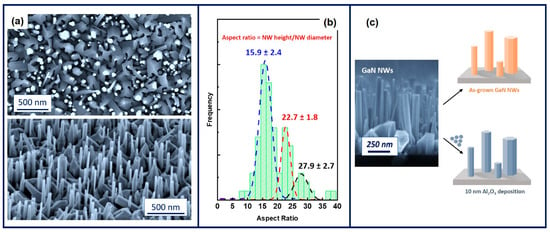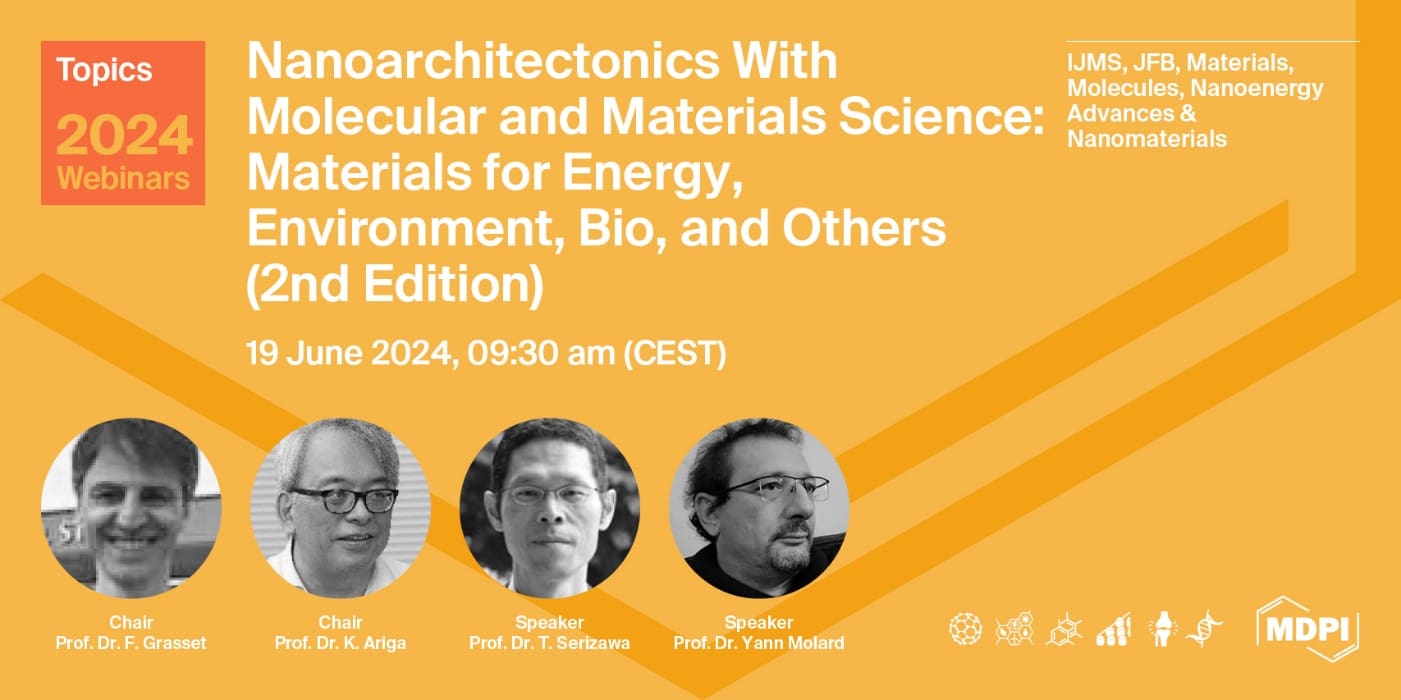-
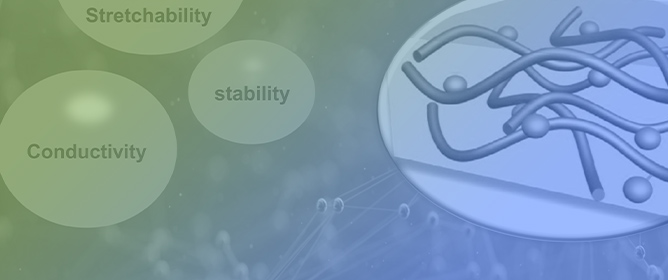 E-Polymers: Applications in Biological Interfaces and Organisms
E-Polymers: Applications in Biological Interfaces and Organisms -
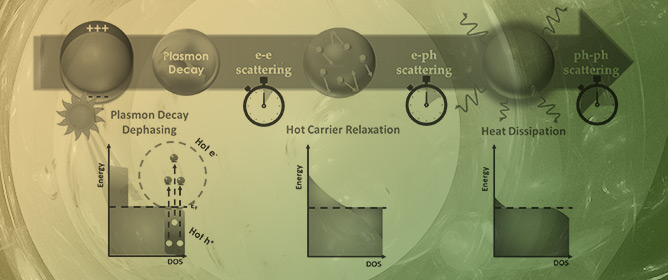 Nanoplasmonics in Catalysis for Energy Technologies: The Concept of Plasmon-Assisted Molecular Catalysis (PAMC)
Nanoplasmonics in Catalysis for Energy Technologies: The Concept of Plasmon-Assisted Molecular Catalysis (PAMC) -
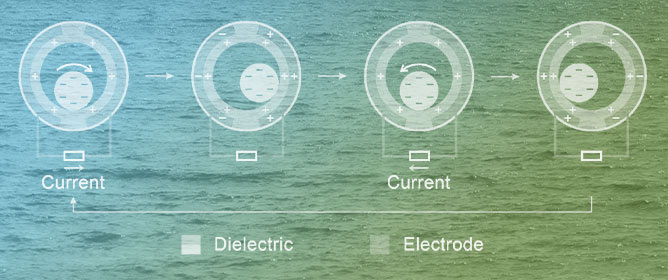 Networking Strategies of Triboelectric Nanogenerators for Harvesting Ocean Blue Energy
Networking Strategies of Triboelectric Nanogenerators for Harvesting Ocean Blue Energy -
 Self-Powered Dual-Mode Pressure Sensor Based on Porous Triboelectric Nanogenerator toward Smart Home System
Self-Powered Dual-Mode Pressure Sensor Based on Porous Triboelectric Nanogenerator toward Smart Home System
Journal Description
Nanoenergy Advances
Nanoenergy Advances
is an international, peer-reviewed, open access journal on all aspects of nanoenergy published quarterly online by MDPI.
- Open Access— free for readers, with article processing charges (APC) paid by authors or their institutions.
- High Visibility: indexed within AGRIS, and other databases.
- Rapid Publication: manuscripts are peer-reviewed and a first decision is provided to authors approximately 31 days after submission; acceptance to publication is undertaken in 4.8 days (median values for papers published in this journal in the second half of 2023).
- Recognition of Reviewers: APC discount vouchers, optional signed peer review, and reviewer names published annually in the journal.
- Nanoenergy Advances is a companion journal of Energies.
Latest Articles
Surface Charge: An Advantage for the Piezoelectric Properties of GaN Nanowires
Nanoenergy Adv. 2024, 4(2), 133-146; https://0-doi-org.brum.beds.ac.uk/10.3390/nanoenergyadv4020008 - 02 Apr 2024
Abstract
The optimization of the new generation of piezoelectric nanogenerators based on 1D nanostructures requires a fundamental understanding of the different physical mechanisms at play, especially those that become predominant at the nanoscale regime. One such phenomenon is the surface charge effect (SCE), which
[...] Read more.
The optimization of the new generation of piezoelectric nanogenerators based on 1D nanostructures requires a fundamental understanding of the different physical mechanisms at play, especially those that become predominant at the nanoscale regime. One such phenomenon is the surface charge effect (SCE), which is very pronounced in GaN NWs with sub-100 nm diameters. With an advanced nano-characterization tool derived from AFM, the influence of SCE on the piezo generation capacity of GaN NWs is investigated by modifying their immediate environment. As-grown GaN NWs are analysed and compared to their post-treated counterparts featuring an Al2O3 shell. We establish that the output voltages systematically decrease by the Al2O3 shell. This phenomenon is directly related to the decrease of the surface trap density in the presence of Al2O3 and the corresponding reduction of the surface Fermi level pinning. This leads to a stronger screening of the piezoelectric charges by the free carriers. These experimental results demonstrate and confirm that the piezo-conversion capacity of GaN NWs is favoured by the presence of the surface charges.
Full article
(This article belongs to the Special Issue Fabrication and Characterization of Materials for Nanoenergy)
►
Show Figures
Open AccessArticle
Lithium on CH Divacancy Self-Healed Graphane: A First-Principles Study
by
Refilwe Edwin Mapasha, Sentserere Phodisho Kgalema, Hezekia Mapingire and Emmanuel Igumbor
Nanoenergy Adv. 2024, 4(1), 122-132; https://0-doi-org.brum.beds.ac.uk/10.3390/nanoenergyadv4010007 - 04 Mar 2024
Abstract
►▼
Show Figures
The possibility of using graphane monolayer crystals as an electrode material is becoming popular. Graphane is stable at room temperature and has a large surface area, but its chemical inertness hinders its direct interactions with Li ions. In this study, we performed density
[...] Read more.
The possibility of using graphane monolayer crystals as an electrode material is becoming popular. Graphane is stable at room temperature and has a large surface area, but its chemical inertness hinders its direct interactions with Li ions. In this study, we performed density functional theory calculations to study the energetic stability and structural and electronic properties of Li on graphane with various CH divacancy configurations (v12, v13, and v14). The results show that the adsorption of the Li atom reduces the formation energy of the CH divacancy configurations. The Li-v12 is most stable with the highest binding energy of 3.25 eV/Li and relaxes to in-plane with other C atoms. Altering the Li charge state to have Li−1-v12 or Li+1-v12 affects the energetic stability and electronic characters of Li-v12. The Li−1-v12 (Li+1-v12) slightly (greatly) reduces the binding force between the Li and v12 configuration, and furthermore it improves (deteriorates) the conductivity of the structure. Further investigation of graphane with vacancies is encouraged due to these intriguing observations, as it holds promise for potential utilization as an electrode material.
Full article
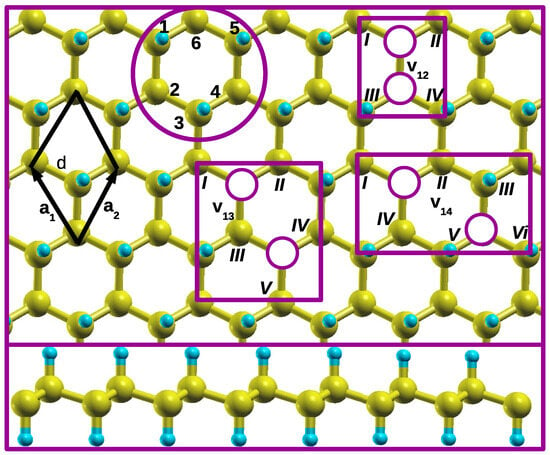
Figure 1
Open AccessArticle
Metal-Free, Bio-Triboelectric Nanogenerator Based on a Single Electrode of Bacterial Cellulose Modified with Carbon Black
by
Andre L. Freire, Lais R. Lima, Iuri C. M. Candido, Luygui G. Silva, Sidney J. L. Ribeiro, Emanuel Carrilho, Thais L. Oliveira, Luiz Fernando C. de Oliveira, Hernane S. Barud and Helinando P. de Oliveira
Nanoenergy Adv. 2024, 4(1), 110-121; https://0-doi-org.brum.beds.ac.uk/10.3390/nanoenergyadv4010006 - 07 Feb 2024
Abstract
►▼
Show Figures
Developing metal-free electrodes for prototypes of bio-based devices is an essential step in producing non-toxic components for implantable devices and wearables. In particular, the advancement in self-powered devices is a hot topic for several applications due to the possibility of creating free-battery devices
[...] Read more.
Developing metal-free electrodes for prototypes of bio-based devices is an essential step in producing non-toxic components for implantable devices and wearables. In particular, the advancement in self-powered devices is a hot topic for several applications due to the possibility of creating free-battery devices and sensors. In this paper, the modification of bacterial cellulose by the progressive incorporation of carbon black (a conductive filler) was explored as a prototype for bio-based electrodes for triboelectric nanogenerators. This process was controlled by the percolation pathways’ activation through the contact of carbon black grains with the bacterial cellulose membrane, which represents a critical step in the overall process of optimization in the power output performance, reaching an open circuit voltage value of 102.3 V, short circuit current of 2 μA, and power density of 4.89 μW/cm2.
Full article
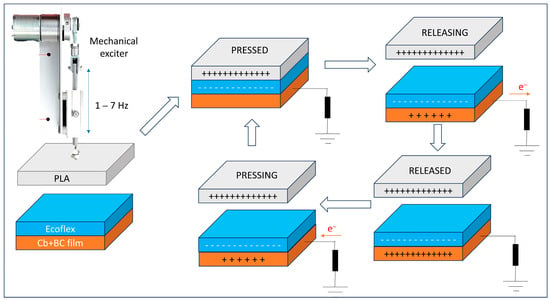
Figure 1
Open AccessFeature PaperArticle
Self-Powered Dual-Mode Pressure Sensor Based on Porous Triboelectric Nanogenerator for Use in Smart Home System
by
Yuanzheng Zhang, Ju Chong, Yiqian Mao, Xiangyang Gao, Jinmiao He, Hao Wang, Shishang Guo and Haiwu Zheng
Nanoenergy Adv. 2024, 4(1), 97-109; https://0-doi-org.brum.beds.ac.uk/10.3390/nanoenergyadv4010005 - 04 Feb 2024
Abstract
With the rapid evolution of the Internet of Things (IoT), smart home systems have greatly improved people’s lifestyles and quality of life. However, smart home systems based on a single sensor cannot efficiently control multiple terminals, which limits product penetration into lower-end markets.
[...] Read more.
With the rapid evolution of the Internet of Things (IoT), smart home systems have greatly improved people’s lifestyles and quality of life. However, smart home systems based on a single sensor cannot efficiently control multiple terminals, which limits product penetration into lower-end markets. Here, we have developed a dual-mode smart home system based on a porous triboelectric nanogenerator (TENG), which effectively compensates for the shortcomings of smart home systems being unable to control multiple appliances through a single switch. Benefitting from the remarkable electronegativity of MXene and the ameliorative specific surface area of the friction layer, the output characteristics of the porous TENG are greatly improved. Under the identical external stimulus, the open-circuit voltage (VOC) and short-circuit current (ISC) of the porous TENG were 3.03 and 3.04 times higher than those of the TENG with a pure PVDF membrane used as the friction layer. Thanks to the excellent output performance and good linear relationship between pressure and voltage, the developed dual-mode smart home system could efficiently control multiple terminals through a single sensor. This work not only provides theoretical support for developing high-performance TENGs but also paves the way to designing multifunctional smart home systems.
Full article
(This article belongs to the Special Issue Celebrating the 18th Anniversary of the Invention of the First Nanogenerators)
►▼
Show Figures
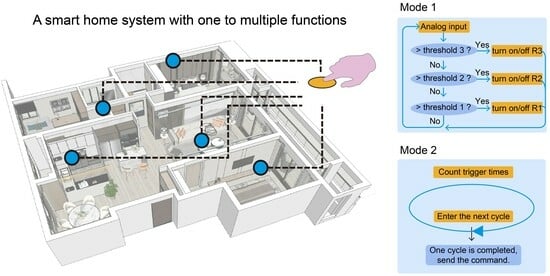
Graphical abstract
Open AccessFeature PaperReview
Networking Strategies of Triboelectric Nanogenerators for Harvesting Ocean Blue Energy
by
Xianye Li, Liang Xu and Zhong Lin Wang
Nanoenergy Adv. 2024, 4(1), 70-96; https://0-doi-org.brum.beds.ac.uk/10.3390/nanoenergyadv4010004 - 22 Jan 2024
Abstract
The utilization of abundant blue energy in the ocean could greatly contribute to achieving carbon neutrality. However, the unsolved economic and technical challenges of traditional technologies for harvesting blue energy have resulted in slow progress. Triboelectric nanogenerators (TENGs), as a new approach for
[...] Read more.
The utilization of abundant blue energy in the ocean could greatly contribute to achieving carbon neutrality. However, the unsolved economic and technical challenges of traditional technologies for harvesting blue energy have resulted in slow progress. Triboelectric nanogenerators (TENGs), as a new approach for converting mechanical energy into electricity, have great potential for blue energy harvesting, which can be connected as networks with different numbers of units for varying scales of energy harvesting. Here, recent advances of networking strategies of TENGs for harvesting blue energy are reviewed, mainly concerning mechanical and electrical connection designs. Anchoring strategies of devices and networks are also discussed. The development of TENG networks could provide an effective solution for large-scale ocean blue energy harvesting, which can also serve as an in-situ energy station or power source for self-powered systems, supporting various marine equipment and activities.
Full article
(This article belongs to the Special Issue Celebrating the 18th Anniversary of the Invention of the First Nanogenerators)
►▼
Show Figures
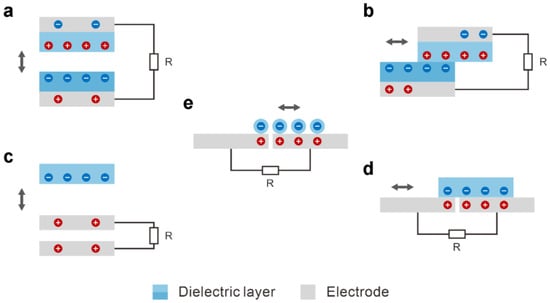
Figure 1
Open AccessReview
Recent Progress of Bioinspired Triboelectric Nanogenerators for Electronic Skins and Human–Machine Interaction
by
Baosen Zhang, Yunchong Jiang, Baojin Chen, Haidong Li and Yanchao Mao
Nanoenergy Adv. 2024, 4(1), 45-69; https://0-doi-org.brum.beds.ac.uk/10.3390/nanoenergyadv4010003 - 17 Jan 2024
Abstract
Advances in biomimetic triboelectric nanogenerators (TENGs) have significant implications for electronic skin (e-skin) and human–machine interaction (HMI). Emphasizing the need to mimic complex functionalities of natural systems, particularly human skin, TENGs leverage triboelectricity and electrostatic induction to bridge the gap in traditional electronic
[...] Read more.
Advances in biomimetic triboelectric nanogenerators (TENGs) have significant implications for electronic skin (e-skin) and human–machine interaction (HMI). Emphasizing the need to mimic complex functionalities of natural systems, particularly human skin, TENGs leverage triboelectricity and electrostatic induction to bridge the gap in traditional electronic devices’ responsiveness and adaptability. The exploration begins with an overview of TENGs’ operational principles and modes, transitioning into structural and material biomimicry inspired by plant and animal models, proteins, fibers, and hydrogels. Key applications in tactile sensing, motion sensing, and intelligent control within e-skins and HMI systems are highlighted, showcasing TENGs’ potential in revolutionizing wearable technologies and robotic systems. This review also addresses the challenges in performance enhancement, scalability, and system integration of TENGs. It points to future research directions, including optimizing energy conversion efficiency, discovering new materials, and employing micro-nanostructuring techniques for enhanced triboelectric charges and energy conversion. The scalability and cost-effectiveness of TENG production, pivotal for mainstream application, are discussed along with the need for versatile integration with various electronic systems. The review underlines the significance of making bioinspired TENGs more accessible and applicable in everyday technology, focusing on compatibility, user comfort, and durability. Conclusively, it underscores the role of bioinspired TENGs in advancing wearable technology and interactive systems, indicating a bright future for these innovations in practical applications.
Full article
(This article belongs to the Special Issue Celebrating the 18th Anniversary of the Invention of the First Nanogenerators)
►▼
Show Figures
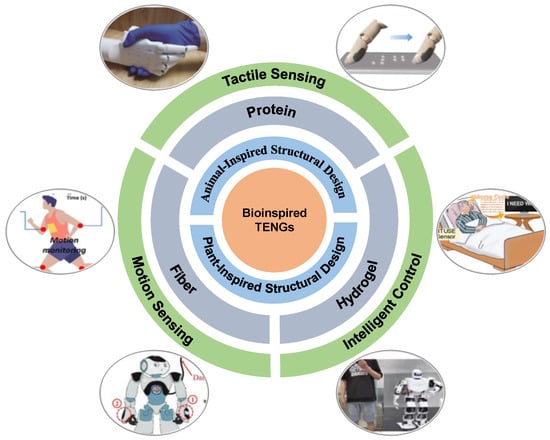
Figure 1
Open AccessReview
Nanoplasmonics in Catalysis for Energy Technologies: The Concept of Plasmon-Assisted Molecular Catalysis (PAMC)
by
Constantinos Moularas, Aikaterini Gemenetzi, Yiannis Deligiannakis and Maria Louloudi
Nanoenergy Adv. 2024, 4(1), 25-44; https://0-doi-org.brum.beds.ac.uk/10.3390/nanoenergyadv4010002 - 30 Dec 2023
Abstract
►▼
Show Figures
The utilization of plasmonic nanomaterials in catalytic technologies is an emerging research field with foreseeable applications in energy-catalytic technologies. On this front, the coupling of plasmonic nanomaterials with molecular catalysts is a newly approached, thus far unexploited field, that we discuss herein. In
[...] Read more.
The utilization of plasmonic nanomaterials in catalytic technologies is an emerging research field with foreseeable applications in energy-catalytic technologies. On this front, the coupling of plasmonic nanomaterials with molecular catalysts is a newly approached, thus far unexploited field, that we discuss herein. In the present mini review, we contrast the case where the plasmonic particle itself is the catalytic center against the case where the plasmonic particle acts as a co-catalyst for an operational catalytic system. In the first part, we present an outline of the key phenomena in nanoplasmonics, and their potential implications in catalytic processes. The concepts of hot electrons, hot holes, and the dynamics of their generation and transfer are reviewed, as are the contribution of near-field and photothermal effects to catalytic processes. All these plasmonic-phenomena are then discussed in conjunction with representative catalytic systems from the literature.
Full article
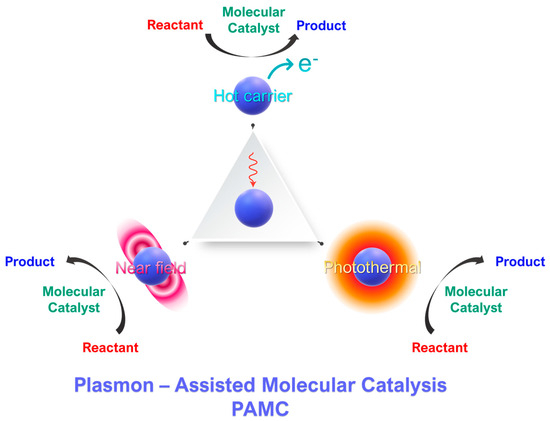
Figure 1
Open AccessFeature PaperReview
E-Polymers: Applications in Biological Interfaces and Organisms
by
Weixin Dou, Sihong Wang and Rusen Yang
Nanoenergy Adv. 2024, 4(1), 1-24; https://0-doi-org.brum.beds.ac.uk/10.3390/nanoenergyadv4010001 - 27 Dec 2023
Abstract
►▼
Show Figures
Future electronics will play a more critical role in people’s lives, as reflected in the realization of advanced human–machine interfaces, disease detection, medical treatment, and health monitoring. The current electronic products are rigid, non-degradable, and cannot repair themselves. Meanwhile, the human body is
[...] Read more.
Future electronics will play a more critical role in people’s lives, as reflected in the realization of advanced human–machine interfaces, disease detection, medical treatment, and health monitoring. The current electronic products are rigid, non-degradable, and cannot repair themselves. Meanwhile, the human body is soft, dynamic, stretchable, degradable, and self-healing. Consequently, it is valuable to develop new electronic materials with skin-like properties that include stretchability, inhibition of invasive reactions, self-healing, long-term durability, and biodegradability. These demands have driven the development of a new generation of electronic materials with high-electrical performance and skin-like properties, among which e-polymers are increasingly being more extensively investigated. This review focuses on recent advances in synthesizing e-polymers and their applications in biointerfaces and organisms. Discussions include the synthesis and properties of e-polymers, the interrelationships between engineered material structures and human interfaces, and the application of implantable and wearable systems for sensors and energy harvesters. The final section summarizes the challenges and future opportunities in the evolving materials and biomedical research field.
Full article
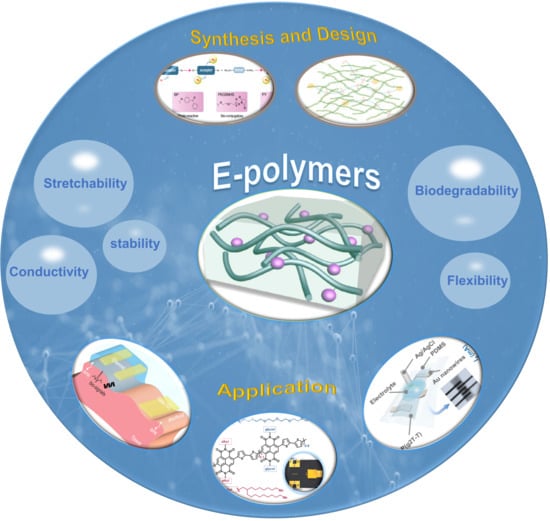
Graphical abstract
Open AccessArticle
Pyro-Phototronic Effect Enhanced MXene/ZnO Heterojunction Nanogenerator for Light Energy Harvesting
by
Mingyan Xue, Fangpei Li, Wenbo Peng, Quanzhe Zhu and Yongning He
Nanoenergy Adv. 2023, 3(4), 401-420; https://0-doi-org.brum.beds.ac.uk/10.3390/nanoenergyadv3040020 - 04 Dec 2023
Abstract
The coupling of pyroelectricity, semiconductor, and optical excitation yields the pyro-phototronic effect, which has been extensively utilized in photodetectors. It can also enhance the performance of light energy harvesting nanogenerators. In this work, a pyro-phototronic effect-enhanced MXene/ZnO heterojunction nanogenerator has been successfully demonstrated,
[...] Read more.
The coupling of pyroelectricity, semiconductor, and optical excitation yields the pyro-phototronic effect, which has been extensively utilized in photodetectors. It can also enhance the performance of light energy harvesting nanogenerators. In this work, a pyro-phototronic effect-enhanced MXene/ZnO heterojunction nanogenerator has been successfully demonstrated, which can harvest broadband light energy (from deep UV to near-infrared) and still operate at 200 °C. The morphology of the ZnO layer and the MXene layer’s thickness have been further optimized for better light energy harvesting performance. For the optimized heterojunction nanogenerator, the responsivity can be improved from ~0.2 mA/W to ~3.5 mA/W by pyro-phototronic effect, under 0.0974 mW/cm2 365 nm UV illumination. Moreover, the coupling of pyro-phototronic and piezo-phototronic effects in MXene/ZnO heterojunction nanogenerators has been investigated. The results indicate that only a small tensile strain could improve the nanogenerator’s performance. The working mechanisms have been carefully analyzed, and the modulation of piezoelectric charges on the Schottky barrier height is found to be the key factor. These results demonstrate the enormous potential of the pyro-phototronic effect in light energy harvesting nanogenerators and illustrate the coupling of pyro-phototronic and piezo-phototronic effects for further performance improvement.
Full article
(This article belongs to the Special Issue Celebrating the 18th Anniversary of the Invention of the First Nanogenerators)
►▼
Show Figures
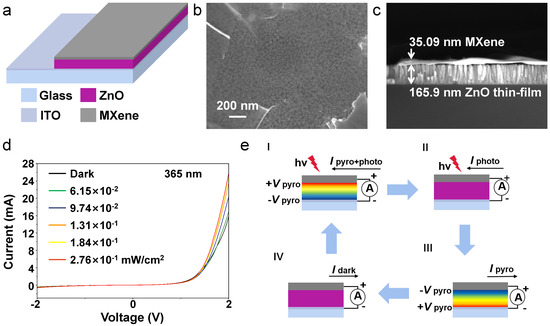
Figure 1
Open AccessReview
Influence of Binary Ligands in Designing Cesium Lead Halide (CsPbX3, X = Cl, Br, I) Perovskite Nanocrystals-Oleic Acid and Oleylamine
by
Ananthakumar Soosaimanickam, Alejandro Saura, Noemi Farinós and Rafael Abargues
Nanoenergy Adv. 2023, 3(4), 376-400; https://0-doi-org.brum.beds.ac.uk/10.3390/nanoenergyadv3040019 - 15 Nov 2023
Abstract
►▼
Show Figures
The surface chemistry of cesium lead halide perovskite nanocrystals has been elaborately studied in recent years and has proved the critical role of carboxylic acids and amines in the formation and stability of the nanocrystals. Specifically, a slight change in the concentration and
[...] Read more.
The surface chemistry of cesium lead halide perovskite nanocrystals has been elaborately studied in recent years and has proved the critical role of carboxylic acids and amines in the formation and stability of the nanocrystals. Specifically, a slight change in the concentration and ratio of the frequently used oleic acid and oleylamine critically influences the resultant phase and physical properties. Thus, understanding the delicate surface of cesium lead halide perovskite nanocrystals mainly relies on chemical bonding and the dynamic ligand environment of these two organic species. In this aspect, this review summarizes experimental findings about the critical role of oleic acid and oleylamine on the nucleation, growth, stability, phase, and morphology of cesium lead halide perovskite nanocrystals and their effect under different circumstances.
Full article
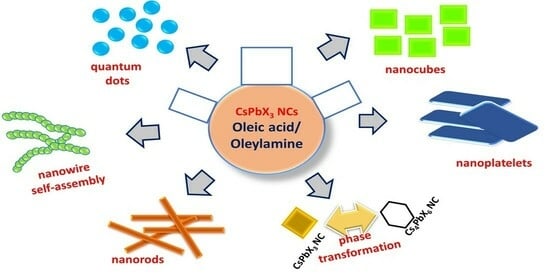
Graphical abstract
Open AccessFeature PaperReview
Direct Current Triboelectric Nanogenerators, a Perspective from Material Selections
by
Xiang Li, Di Wei and Zhong Lin Wang
Nanoenergy Adv. 2023, 3(4), 343-375; https://0-doi-org.brum.beds.ac.uk/10.3390/nanoenergyadv3040018 - 03 Nov 2023
Cited by 2
Abstract
With the global energy shortages, sustainable energy scavenging from the natural environment is desperately needed. Unlike solar cell or wind power, which depends heavily on weather conditions, triboelectric nanogenerator (TENG) has received extensive attention as an efficient all–weather energy–harvesting technology. Based on the
[...] Read more.
With the global energy shortages, sustainable energy scavenging from the natural environment is desperately needed. Unlike solar cell or wind power, which depends heavily on weather conditions, triboelectric nanogenerator (TENG) has received extensive attention as an efficient all–weather energy–harvesting technology. Based on the coupling principle of contact electrification (CE) and electrostatic induction, conventional TENGs convert mechanical energy into an alternating current (AC) output. However, the typically distributed sensor systems in the ubiquitous Internet of Things (IoTs) request a direct current (DC) input. Direct current triboelectric nanogenerators (DC-TENGs) with the constant output characteristic are critical to satisfy the above requirements. Here, DC-TENGs were reviewed from the perspective of material selections. As device performance is mainly determined by material properties, the development of DC-TENGs could be divided into three categories based on dielectric materials, semiconductor materials, and materials for iontronic rectifications. The operating mechanism and influencing factors of various types of DC-TENG were summarized, representative applications were demonstrated, and the main challenges of future developments were also discussed.
Full article
(This article belongs to the Special Issue Celebrating the 18th Anniversary of the Invention of the First Nanogenerators)
►▼
Show Figures
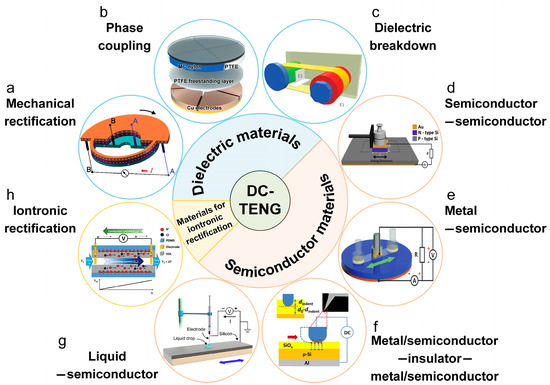
Figure 1
Open AccessReview
Hydrogel-Based Energy Harvesters and Self-Powered Sensors for Wearable Applications
by
Zhaosu Wang, Ning Li, Zhiyi Zhang, Xiaojing Cui and Hulin Zhang
Nanoenergy Adv. 2023, 3(4), 315-342; https://0-doi-org.brum.beds.ac.uk/10.3390/nanoenergyadv3040017 - 16 Oct 2023
Cited by 2
Abstract
Collecting ambient energy to power various wearable electronics is considered a prospective approach to addressing their energy consumption. Mechanical and thermal energies are abundantly available in the environment and can be efficiently converted into electricity based on different physical effects. Hydrogel-based energy harvesters
[...] Read more.
Collecting ambient energy to power various wearable electronics is considered a prospective approach to addressing their energy consumption. Mechanical and thermal energies are abundantly available in the environment and can be efficiently converted into electricity based on different physical effects. Hydrogel-based energy harvesters have turned out to be a promising solution, owing to their unique properties including flexibility and biocompatibility. In this review, we provide a concise overview of the methods and achievements in hydrogel-based energy harvesters, including triboelectric nanogenerators, piezoelectric nanogenerators, and thermoelectric generators, demonstrating their applications in power generation, such as LED lighting and capacitor charging. Furthermore, we specifically focus on their applications in self-powered wearables, such as detecting human motion/respiration states, monitoring joint flexion, promoting wound healing, and recording temperature. In addition, we discuss the progress in the sensing applications of hydrogel-based self-powered electronics by hybridizing multiple energy conversion in the field of wearables. This review analyzes hydrogel-based energy harvesters and their applications in self-powered sensing for wearable devices, with the aim of stimulating ongoing advancements in the field of smart sensors and intelligent electronics.
Full article
(This article belongs to the Special Issue Celebrating the 18th Anniversary of the Invention of the First Nanogenerators)
►▼
Show Figures
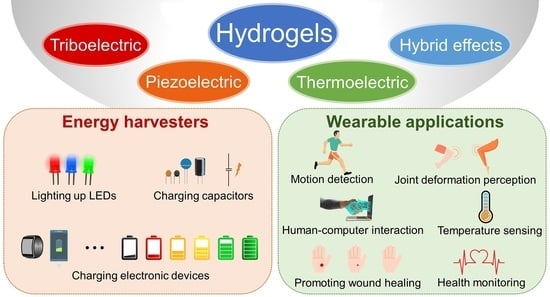
Graphical abstract
Open AccessReview
A Review of Fluid Energy Converters Based on Triboelectric Nanogenerators: Performance Analysis from Energy Conversion
by
Qianying Li and Yi Xi
Nanoenergy Adv. 2023, 3(4), 282-314; https://0-doi-org.brum.beds.ac.uk/10.3390/nanoenergyadv3040016 - 08 Oct 2023
Abstract
In recent years, the development of the Internet of Things has challenged traditional energy supply methods. Suddenly rising maintenance costs and serious environmental pollution have led to great concern over energy supply methods such as wired transmission and batteries. Fluid energy is a
[...] Read more.
In recent years, the development of the Internet of Things has challenged traditional energy supply methods. Suddenly rising maintenance costs and serious environmental pollution have led to great concern over energy supply methods such as wired transmission and batteries. Fluid energy is a kind of clean energy widely existing in nature, which can effectively reduce costs and environmental pollution. In the field of collecting fluid energy, fluid energy converters based on triboelectric nanogenerators (FEC-TENGs) have always been a research hotspot. This paper reviews the latest research progress of FEC-TENGs. Firstly, the basic working principle and working mode of FEC-TENGs are introduced. Then, the theoretical process and application examples of converting fluid energy into electrical energy or electrical signals are analyzed in detail. According to the calculation process of energy conversion efficiency and the performance evaluation parameters, the structural design, performance output, and application fields of FEC-TENGs are summarized. Finally, this paper points out the challenges and shortcomings of the current FEC-TENGs and provides our views on the future development of this field.
Full article
(This article belongs to the Special Issue Fabrication and Characterization of Materials for Nanoenergy)
►▼
Show Figures
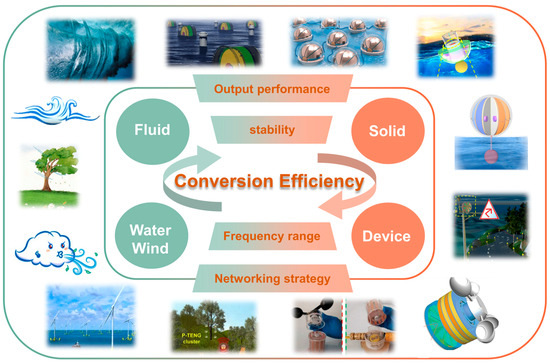
Figure 1
Open AccessArticle
Suspended-Load Backpacks to Reduce the Cost of Carrying Loads with Energy Scavenging Potential—Part 2: Bio-Inspired Pre-Rotation Design
by
Maoyi Zhang, Liang Guo, Jihai Hu, Xingquan Wang, Ya Yang and Yewang Su
Nanoenergy Adv. 2023, 3(3), 271-281; https://0-doi-org.brum.beds.ac.uk/10.3390/nanoenergyadv3030015 - 04 Sep 2023
Cited by 1
Abstract
►▼
Show Figures
Backpack transportation is everywhere in daily life. Suspended-load backpacks (SUSBs) based on forced vibration have attracted lots of attention because of their ability to effectively reduce the cost on the body during motion. The smaller the natural frequency of SUSBs, the better the
[...] Read more.
Backpack transportation is everywhere in daily life. Suspended-load backpacks (SUSBs) based on forced vibration have attracted lots of attention because of their ability to effectively reduce the cost on the body during motion. The smaller the natural frequency of SUSBs, the better the cost reduction. The natural frequency is determined by the elastic components of SUSBs. It is currently common to use rubber ropes and pulleys as elastic components. In the first part of this paper, we propose a pre-compression design for SUSBs, which has a simple structure and breaks through the limitation of rubber material. To make the natural frequency small enough, rubber ropes and compression springs require sufficient space. This leads to the current SUSBs being large and, therefore, not suitable for children to carry. Inspired by biology, here we propose a new design strategy of pre-rotation with pre-rotation spiral springs as elastic components. The pre-rotation design not only has the advantages of avoiding the inconvenience of material aging and the ability to adjust the downward sliding distance of the backpack but also greatly saves the space occupied by the elastic components, which can be adopted by small SUSBs. We have developed a theoretical model of the pre-rotation SUSBs and experimentally confirmed the performance of the pre-rotation SUSBs. This work provides a unique design approach for small SUSBs and small suspended-load devices. And the relative motion between the components inside the SUSB has a huge potential to be used by triboelectric nanogenerators for energy scavenging.
Full article
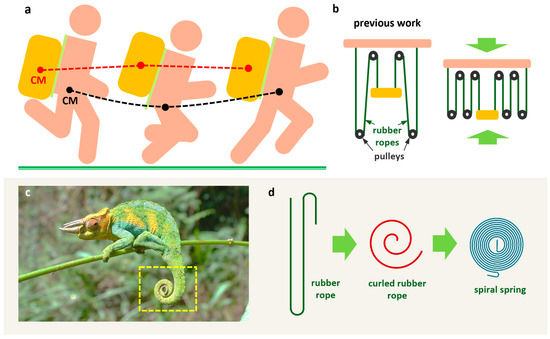
Figure 1
Open AccessArticle
Suspended-Load Backpacks to Reduce the Cost of Carrying Loads with Energy Scavenging Potential—Part 1: Pre-Compression Design
by
Maoyi Zhang, Liang Guo, Jihai Hu, Xingquan Wang, Ya Yang and Yewang Su
Nanoenergy Adv. 2023, 3(3), 259-270; https://0-doi-org.brum.beds.ac.uk/10.3390/nanoenergyadv3030014 - 04 Sep 2023
Abstract
►▼
Show Figures
Backpack transportation is commonly used in daily life. Reducing the cost of the backpack on the human body is a widely researched subject. Suspended-load backpacks (SUSBs) based on forced vibration can effectively reduce the cost during movement. The intrinsic frequency of the SUSB
[...] Read more.
Backpack transportation is commonly used in daily life. Reducing the cost of the backpack on the human body is a widely researched subject. Suspended-load backpacks (SUSBs) based on forced vibration can effectively reduce the cost during movement. The intrinsic frequency of the SUSB is determined by the elastic components of the SUSB. Previous researchers used pulleys and rubber ropes as the elastic components. We propose a pre-compression design strategy based on pre-compression springs. Compared with previous studies, the use of pre-compression springs as elastic elements improves the reliability of the SUSB structure, avoids the inconvenience of nonlinearity and material aging, and adds the ability to flexibly adjust the sliding distance of the backpack. Moreover, previous studies utilized the relative motion between the carrying part and the backpack part to scavenge the vibration energy. We propose that the vibration energy can also be scavenged by the relative motion between the elastic components. A theoretical model is developed for the pre-compression SUSB. We experimentally confirm the performance of the pre-compression SUSB. This work provides new design ideas for SUSBs with reduced energy costs. In Part 2, we propose a bio-inspired pre-rotation design that has the advantage of occupying less space.
Full article
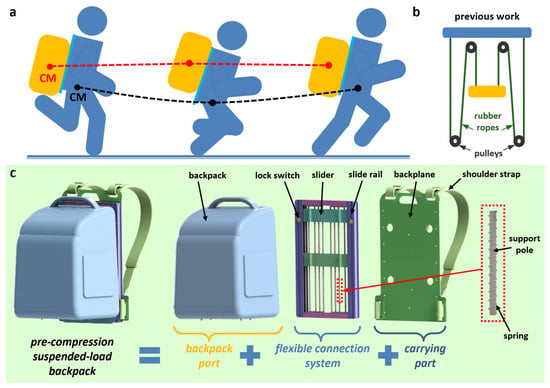
Figure 1
Open AccessArticle
Multi-Charge Storage Layer Model of High-Charge-Density Triboelectric Nanogenerator
by
Xin Cui, Yaming Zhang and Yan Zhang
Nanoenergy Adv. 2023, 3(3), 247-258; https://0-doi-org.brum.beds.ac.uk/10.3390/nanoenergyadv3030013 - 31 Aug 2023
Abstract
Triboelectric nanogenerators (TENGs) are key technologies for the Internet of Things with energy harvesting. To improve energy conversion efficiency and convert mechanical energy into electrical energy, high charge density in TENGs plays a crucial role in the design of triboelectric materials and device
[...] Read more.
Triboelectric nanogenerators (TENGs) are key technologies for the Internet of Things with energy harvesting. To improve energy conversion efficiency and convert mechanical energy into electrical energy, high charge density in TENGs plays a crucial role in the design of triboelectric materials and device structures. This paper proposes mechanisms and strategies to increase TENGs’ charge density through multi-charge storage layers. We also discuss the realization of higher charge densities through material and structure design. The implementation of novel charge storage strategies holds the potential for significant improvements in charge density.
Full article
(This article belongs to the Special Issue Celebrating the 18th Anniversary of the Invention of the First Nanogenerators)
►▼
Show Figures
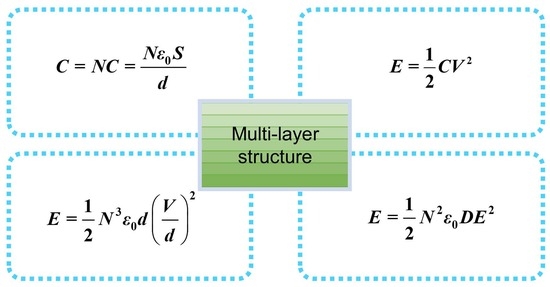
Graphical abstract
Open AccessArticle
A Double-Electrode-Layer Wind-Driven Triboelectric Nanogenerator with Low Frictional Resistance and High Mechanical Energy Conversion Efficiency of 10.3%
by
Dongyang Fang, Guangqin Gu, Wenhe Zhang, Guangxiang Gu, Cong Wang, Bao Zhang, Gang Cheng and Zuliang Du
Nanoenergy Adv. 2023, 3(3), 236-246; https://0-doi-org.brum.beds.ac.uk/10.3390/nanoenergyadv3030012 - 08 Aug 2023
Cited by 1
Abstract
As a new technology for harvesting distributed energy, the triboelectric nanogenerator (TENG) has been widely used in harvesting wind energy. However, the wind-driven TENG (WD-TENG) faces the problems of high frictional resistance and low mechanical energy conversion efficiency. Here, based on optimizing the
[...] Read more.
As a new technology for harvesting distributed energy, the triboelectric nanogenerator (TENG) has been widely used in harvesting wind energy. However, the wind-driven TENG (WD-TENG) faces the problems of high frictional resistance and low mechanical energy conversion efficiency. Here, based on optimizing the structure of the wind turbine, a rotational double-electrode-layer WD-TENG (DEL-WD-TENG) is developed. When the rotational speed is less than 400 round per minute (rpm), the dielectric triboelectric layer rubs with the inner electrode layer under its gravity; when the rotational speed is higher than 400 rpm, the dielectric triboelectric layer rubs with the outer electrode layer under the centrifugal force. The double-electrode-layer structure avoids the energy loss caused by other forces except gravity, centrifugal, and electrostatic adsorption, which improves the mechanical energy conversion efficiency and prolongs the working life of the DEL-WD-TENG. The conversion efficiency from mechanical energy to electricity of the DEL-WD-TENG can reach 10.3%. After 7 million cycles, the transferred charge of the DEL-WD-TENG is reduced by about 5.0%, and the mass loss of dielectric triboelectric layer is only 5.6%. The DEL-WD-TENG with low frictional resistance and high energy conversion efficiency has important application prospects in wind energy harvesting and self-powered sensing systems.
Full article
(This article belongs to the Special Issue Celebrating the 18th Anniversary of the Invention of the First Nanogenerators)
►▼
Show Figures
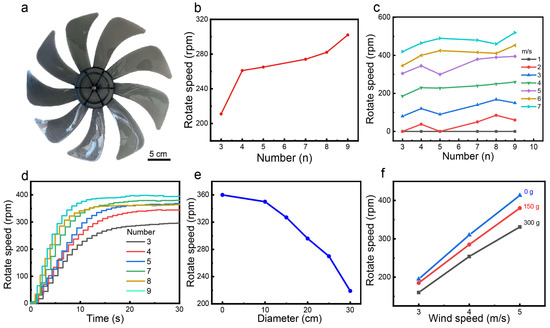
Figure 1
Open AccessFeature PaperArticle
Correlation between the Dimensions and Piezoelectric Properties of ZnO Nanowires Grown by PLI-MOCVD with Different Flow Rates
by
Quang Chieu Bui, Vincent Consonni, Carmen Jiménez, Hervé Roussel, Xavier Mescot, Bassem Salem and Gustavo Ardila
Nanoenergy Adv. 2023, 3(3), 220-235; https://0-doi-org.brum.beds.ac.uk/10.3390/nanoenergyadv3030011 - 02 Aug 2023
Abstract
Zinc oxide nanowires (ZnO NWs) have gained considerable attention in the field of piezoelectricity in the past two decades. However, the impact of growth-process conditions on their dimensions and polarity, as well as the piezoelectric properties, has not been fully explored, specifically when
[...] Read more.
Zinc oxide nanowires (ZnO NWs) have gained considerable attention in the field of piezoelectricity in the past two decades. However, the impact of growth-process conditions on their dimensions and polarity, as well as the piezoelectric properties, has not been fully explored, specifically when using pulsed-liquid injection metal–organic chemical vapor deposition (PLI-MOCVD). In this study, we investigate the influence of the O2 gas and DEZn solution flow rates on the formation process of ZnO NWs and their related piezoelectric properties. While the length and diameter of ZnO NWs were varied by adjusting the flow-rate conditions through different growth regimes limited either by the O2 gas or DEZn reactants, their polarity was consistently Zn-polar, as revealed by piezoresponse force microscopy. Moreover, the piezoelectric coefficient of ZnO NWs exhibits a strong correlation with their length and diameter. The highest mean piezoelectric coefficient of 3.7 pm/V was measured on the ZnO NW array with the length above 800 nm and the diameter below 65 nm. These results demonstrate the ability of the PLI-MOCVD system to modify the dimensions of ZnO NWs, as well as their piezoelectric properties.
Full article
(This article belongs to the Special Issue Celebrating the 18th Anniversary of the Invention of the First Nanogenerators)
►▼
Show Figures

Graphical abstract
Open AccessReview
Rotating Triboelectric Nanogenerators for Energy Harvesting and Their Applications
by
Apostolos Segkos and Christos Tsamis
Nanoenergy Adv. 2023, 3(3), 170-219; https://0-doi-org.brum.beds.ac.uk/10.3390/nanoenergyadv3030010 - 05 Jul 2023
Cited by 4
Abstract
Addressing the increasing development of IoT networks and the associated energy requirements, rotating triboelectric nanogenerators (R-TENGs) are proving to be strong candidates in the field of energy harvesting, as well as to that of self-powered devices and autonomous sensors. In this work, we
[...] Read more.
Addressing the increasing development of IoT networks and the associated energy requirements, rotating triboelectric nanogenerators (R-TENGs) are proving to be strong candidates in the field of energy harvesting, as well as to that of self-powered devices and autonomous sensors. In this work, we review the theoretical framework surrounding the operating principles and key design parameters of R-TENGs, while also associating them with their output characteristics. Furthermore, we present an overview of the core designs used by the research community in energy harvesting applications, as well as variations of these designs along with explicit solutions for the engineering and optimization of the electrical output of R-TENGs. Last but not least, a comprehensive survey of the potential applications of R-TENGs outside the energy harvesting scope is provided, showcasing the working principles of the various designs and the benefits they confer for each specific scenario.
Full article
(This article belongs to the Special Issue Fabrication and Characterization of Materials for Nanoenergy)
►▼
Show Figures
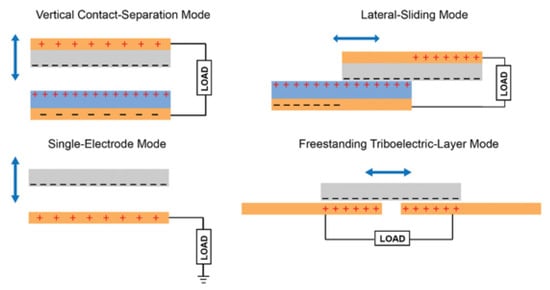
Figure 1
Open AccessArticle
Efficient Cathode Interfacial Layer for Low-Light/Indoor Non-Fullerene Organic Photovoltaics
by
Muhammad Jahandar, Jinhee Heo, Soyeon Kim and Dong Chan Lim
Nanoenergy Adv. 2023, 3(2), 155-169; https://0-doi-org.brum.beds.ac.uk/10.3390/nanoenergyadv3020009 - 20 Jun 2023
Abstract
►▼
Show Figures
Indoor organic photovoltaics (IOPVs) have attained considerable research attention as a power source for a low-power consumption self-sustainable electronic device for Internet of Things (IoT) applications. This study aims to develop an efficient cathode interfacial layer (CIL) based on a polyethyleneimine (PEIE) derivative,
[...] Read more.
Indoor organic photovoltaics (IOPVs) have attained considerable research attention as a power source for a low-power consumption self-sustainable electronic device for Internet of Things (IoT) applications. This study aims to develop an efficient cathode interfacial layer (CIL) based on a polyethyleneimine (PEIE) derivative, processed at room temperature, for the advancement of non-fullerene acceptor (NFA)-based IOPVs. Using a simple chemical reaction between polyethyleneimine and cobalt (II) chloride, we developed a 3D network-structured CIL. Through quaternary ammonium salts and chelating, metal ions act as mediators and induce metal-ion doping. An inverted device architecture with wide-bandgap and low-bandgap photo-absorber layer is utilized to understand the role of CILs under standard 1 sun and low-light or indoor light illuminations. The IOPV devices with modified CIL (Co-PEIE) having PBDB-T: IT-M and PBDB-T-2F: BTP-4F photo-absorber layers demonstrate a power conversion efficiency of 22.60% and 18.34% under 1000 lux LED lamp (2700 K) illumination conditions, respectively, whereas the IOPV devices with pristine PEIE CIL realized a poor device performance of 18.31% and 14.32% for the PBDB-T: IT-M and PBDB-T-2F: BTP-4F active layers, respectively. The poor device performance of PEIE interlayer-based IOPV under low-light conditions is the result of the significantly high leakage current and low shunt resistance that directly affect the open-circuit voltage (VOC) and fill factor (FF). Therefore, the adjustable energy barrier and notably low leakage current exhibited by the Co-PEIE CIL have a crucial impact on mitigating losses in VOC and FF when operating under low-light conditions.
Full article
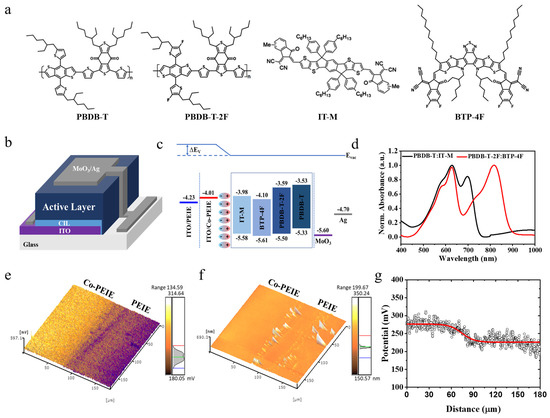
Figure 1
Highly Accessed Articles
Latest Books
E-Mail Alert
News
Topics
Topic in
Applied Sciences, Energies, Materials, Nanoenergy Advances, Nanomaterials
Applications of Nanomaterials in Energy Systems, 2nd Volume
Topic Editors: Eleftheria C. Pyrgioti, Ioannis F. Gonos, Diaa-Eldin A. MansourDeadline: 30 April 2024
Topic in
Batteries, Energies, Materials, Nanomaterials, Nanoenergy Advances
Advanced Nanomaterials for Lithium-Ion Batteries
Topic Editors: Christian M. Julien, Binghui XuDeadline: 31 May 2024
Topic in
Energies, Molecules, Nanoenergy Advances
Challenges towards Upscaling and Stabilization of Perovskite Solar Cells
Topic Editors: Federico Bella, Shijing SunDeadline: 31 October 2024
Topic in
Energies, Materials, Applied Sciences, Entropy, Nanoenergy Advances
Thermoelectric Energy Harvesting
Topic Editors: Amir Pakdel, David BerthebaudDeadline: 31 December 2024

Conferences
Special Issues
Special Issue in
Nanoenergy Advances
Celebrating the 18th Anniversary of the Invention of the First Nanogenerators
Guest Editors: Ya Yang, Zhong Lin WangDeadline: 30 June 2024
Special Issue in
Nanoenergy Advances
Novel Energy Materials
Guest Editors: Joao Ventura, Elby Titus, Carmen M. RangelDeadline: 31 December 2024

